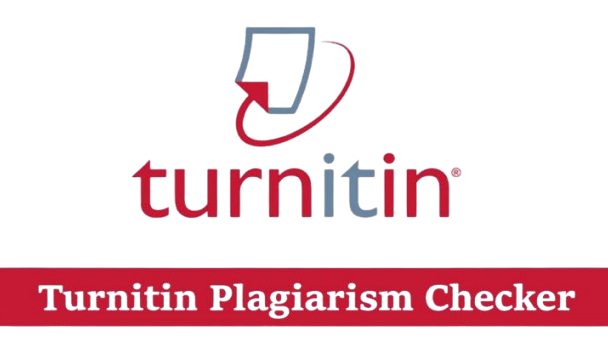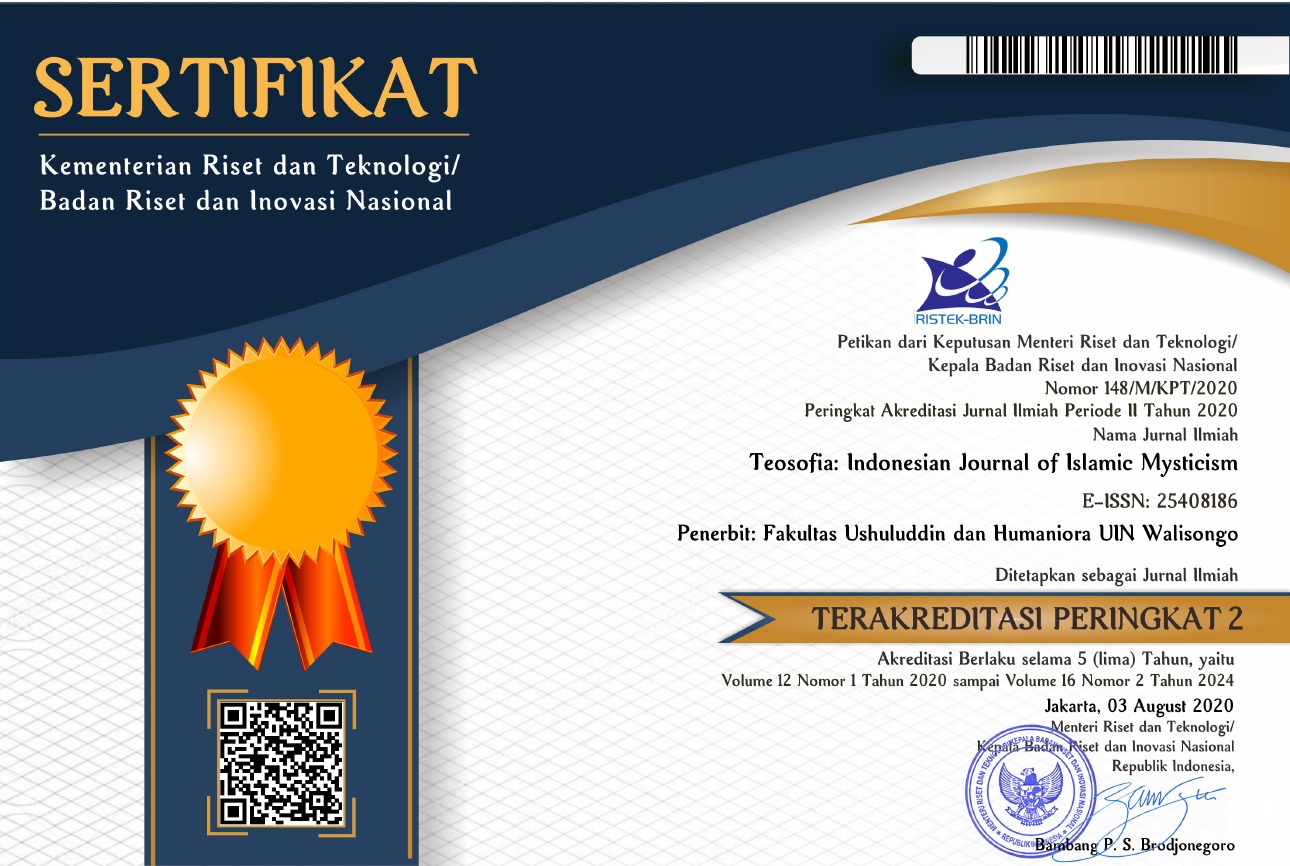The Dimensions of Sufi Healing in Traditional Medication of the Islamic-Banjar Community
DOI:
https://doi.org/10.21580/tos.v11i2.13721Keywords:
sufi healing, Batatamba, mystic, Banjar communityAbstract
Sufi healing has become an exciting topic to discuss amid the COVID-19 outbreak. Various alternative health treatments remain a concern from a medical and non-medical perspective. One kind of Sufi healing originating from the Banjar community in South Kalimantan is the practice of Batatamba. This study examines the forms, methods and sources of Sufi healing practice that live and develop in South Kalimantan. The method used in this study is qualitative. The data were collected from field research. It employs an anthropological approach which looks at the Sufi side of healing in the practice of Batatamba.
Contribution: This study gives a new insight into Sufi healing that developed in South Kalimantan that combines the Sufistic tradition with local wisdom and the legitimacy of mystics in knowledge transfer (epistemology). The mystical legitimacy has made practitioners of traditional medication in this area, commonly known as Pananamba, have a sacred element and are committed to a humane mission to help others.
Downloads
References
AlRawi, Sara N., Amal Khidir, Maha S. Elnashar, Huda A. Abdelrahim, Amal K. Killawi, Maya M. Hammoud, and Michael D. Fetters. ‘Traditional Arabic & Islamic Medicine: Validation and Empirical Assessment of a Conceptual Model in Qatar’. BMC Complementary and Alternative Medicine 17, no. 1 (14 December 2017): 157. https://doi.org/10.1186/s12906-017-1639-x.
AlRawi, Sara N, and Michael D. Fetters. ‘Traditional Arabic & Islamic Medicine: A Conceptual Model for Clinicians and Researchers’. Global Journal of Health Science 4, no. 3 (28 April 2012): 164–69. https://doi.org/10.5539/gjhs.v4n3p164.
Ary, Donald. An Introduction to Research in Social Education. Beverly Hills: Sage Publication, 2002.
As-Suyuthi, Jalaluddin Abdurrahman. As-Suyuti’s Medicine of the Prophet, May Allah Bless Him and Grant Him Peace. London: Ta-Ha, 1999.
———. Pengobatan Cara Nabi. Translated by Luqman Hakim and Ahsin Mohammad. Bandung: Pustaka Hidayah, 2006.
Asmaran, Asmaran. ‘Membaca Fenomena Ziarah Wali Di Indonesia: Memahami Tradisi Tabarruk Dan Tawassul’. Al-Banjari : Jurnal Ilmiah Ilmu-Ilmu Keislaman 17, no. 2 (31 December 2018): 173–200. https://doi.org/10.18592/al-banjari.v17i2.2128.
Asqalani, Ibnu Hajar al. Kitab Wabah Dan Taun Dalam Islam. Translated by Fuad Syaifuddin Nur. Jakarta: Turos Pustaka, 2021.
Bruinessen, Martin van, and Julia Day Howell, eds. Sufism and the ‘Modern’ in Islam. London: I.B. Tauris, 2007.
Dalen, Elaine Van. ‘The Rhetorical Strategies in the Arabic Commentaries on the Hippocratic AphorismsAn Exploration of Metadiscourse in Medieval Medical Arabic’. The University of Manchester, 2017. https://research.manchester.ac.uk/files/54591211/FULL_TEXT.PDF.
Farmawati, Cintami. ‘Sufistic Therapy with Spiritual Emotional Freedom Technique (Seft) Method for Healing the Behavior of Drugs Addict’. Jurnal THEOLOGIA 30, no. 1 (10 June 2019): 107–26. https://doi.org/10.21580/teo.2019.30.1.3393.
Jamalie, Zulfa, and Muhammad Rif’at. ‘Dakwah Kultural: Dialektika Islam Dan Budaya Dalam Tradisi Batatamba’. Alhadharah Jurnal Ilmu Dakwah 11, no. 21 (2012): 61–76. https://doi.org/10.18592/alhadharah.v11i21.1786.
Lagziel, Tomer, Malik Muhammad Sohail, Harold G. Koenig, Jeffrey E. Janis, Stephen J. Poteet, Kimberly H. Khoo, Julie A. Caffrey, Sheera F. Lerman, and Charles S. Hultman. ‘Spiritual Healing: A Triple Scoping Review of the Impact of Spirituality on Burn Injuries, Wounds, and Critical Care’. European Burn Journal 3, no. 1 (24 February 2022): 188–96. https://doi.org/10.3390/ebj3010016.
Lone, Niyaz Ahmad. ‘The Role and Significance of Taṣawwuf in Modern-Day Crisis’. Teosofia: Indonesian Journal of Islamic Mysticism 11, no. 1 (16 June 2022): 83–102. https://doi.org/10.21580/tos.v11i1.12030.
Majid, M. Kharis, Winda Roini, Azmi Putri Ayu Wardani, and Maulida Hasyyah Sabrina. ‘The Urgency of Spiritual Healing during the Coronavirus Outbreak’. Teosofia: Indonesian Journal of Islamic Mysticism 11, no. 1 (3 June 2022): 23–42. https://doi.org/10.21580/tos.v11i1.9569.
Moinuddin, Abu Abdullah Ghulam. Penyembuhan Cara Sufi. Yogyakarta: Yayasan Bentang Budaya, 1999.
Mugiarto. ‘Metode Terapi Pendidikan Sufistik’. Cakrawala Jurnal Manajemen Pendidikan Islam Dan Studi Sosial 2, no. 2 (2018): 25–41. https://ejournal.iainu-kebumen.ac.id/index.php/cka/article/view/52.
Mustamir. Hidup Sehat & Herbal Ala Resep Sufi. Yogyakarta: DIVA Press, 2008.
Nugroho, Rahmat Joko. ‘Metode Terapi Pendidikan Sufistik (Studi Tentang Penyembuhan Penderita Gangguan Jiwa Di Padepokan Wali Sirri Desa Winong Kec. Mirit Kab. Kebumen)’. In Semnas PPM2018: Hasil Penelitian Dan Pengabdian Kepada Masyarakat, 312–18. Surabaya: LPPM - Universitas Negeri Surabaya, 2018.
Nurdeen, Deuraseh. ‘Health and Medicine in the Islamic Tradition Based on the Book of Medicine (Kitab Al-Tibb) of Sahih Al-Bukhari’. JISHIM: Journal of the International Society for the History of Islamic Medicine 5, no. 9 (2006): 2–14. http://www.ishim.net/ishimj/910/JISHIM NO.9 PDF/01.pdf.
O’Riordan, Linda. The Art of Sufi Healing. Washington DC: MTO Pubns Center, 2000.
Rahmadi, Agus. Kitab Pedoman Pengobatan Nabi. Jakarta: Wahyu Qalbu, 2019.
Rahman, Farhat Naz. ‘Spiritual Healing and Sufi Practices’. Nova Journal of Sufism and Spirituality 2, no. 1 (2014): 1–9. https://www.researchgate.net/publication/272027008_Spiritual_Healing_and_Sufi_Practices.
Rahman, Fazlur. Health and Medicine in the Islamic Tradition: Change and Identity. Chicago: Kazi Publication Inc., 1998.
Rahmat, Hayatul Khairul, Ela Nurmalasari, and A. Said Hasan Basri. ‘Implementasi Konseling Krisis Terintegrasi Sufi Healing Untuk Menangani Trauma Anak Usia Dini Pada Situasi Krisis Pasca Bencana’. In Prosiding Seminar Nasional PIT Ke-5 Riset Kebencanaan IABI, 671–78. Padang: Universitas Andalas, 2018.
Rusandi, M. Arli, and Ledya Oktavia Liza. ‘Nilai-Nilai Batatamba Masyarakat Banjar Bantaran Sungai Dalam Mengatasi Gangguan Psikologis (Gelisah Dan Gangguan Tidur) Kedalam Bimbingan Dan Konseling’. In Proceeding International Seminar on Counselling 2017 (MALINDO5), 320–25. Selangor: IPG Kampus Pendidikan Islam, 2017.
Saniotis, Arthur. ‘Islamic Medicine and Evolutionary Medicine: A Comparative Analysis’. Journal of the Islamic Medical Association of North America 44, no. 1 (29 June 2012). https://doi.org/10.5915/44-1-8780.
Setiawan, Mohamad Nur Kholis. ‘Sufism and Pandemic: Lesson Learned from Sufi Teachings and Its Prominent Figures’. Teosofia: Indonesian Journal of Islamic Mysticism 10, no. 2 (20 December 2021): 161–76. https://doi.org/10.21580/tos.v10i2.10054.
Shofa, Anis Nailus. ‘Metode Rehabilitasi Jiwa Bagi Pecandu Narkoba Di Panti Rehabilitasi Cacat Mental Dan Sakit Jiwa Nurussalam Sayung Demak Dalam Pandangan Psikoterapi Islam’. UIN Walisongo Semarang, 2015. http://eprints.walisongo.ac.id/id/eprint/4535/.
Simmons, Gwendolyn Zoharah. ‘Sufism and Its Response to Fundamentalism’. In Sufism and Social Integration, edited by Mohammad H. Faghfoory and Golam Dastagir. Chicago: ABC International Group. Inc, 2015.
Singarimbun, Masri, and Sofian Efendi, eds. Metode Penelitian Survei. Jakarta: LP3ES, 1995.
Strauss, Anselm. Dasar-Dasar Penelitian Kualitatif: Tata Langkah Dan Teknik Teorisasi Data. Translated by Muhammad Shodiq. Yogyakarta: Pustaka Pelajar, 2003.
Syariffuddin, M. ‘Terapi Ruqyah Syar’iyyah Untuk Mengatasi Gangguan Kesurupan Dalam Pandangan Ustadz Sahudi’. UIN Walisongo Semarang, 2018. http://eprints.walisongo.ac.id/id/eprint/9255/.
Syed, Ibrahim B. ‘Spiritual Medicine in the History of Islamic Medicine’. JISHIM: Journal of the International Society for the History of Islamic Medicine 2, no. 4 (2003): 45–49. http://www.ishim.net/ishimj/4/08.pdf.
Syukur, Muhammad Amin. ‘Sufi Healing: Terapi Dalam Literatur Tasawuf’. Walisongo: Jurnal Penelitian Sosial Keagamaan 20, no. 2 (2012): 391–412. https://doi.org/10.21580/ws.20.2.205.
Wajidi. Akulturasi Budaya Banjar Di Banua Halat. Yogyakarta: Pustaka Book Publisher, 2011.
Downloads
Published
How to Cite
Issue
Section
License
Copyright
The copyright of the received article shall be assigned to the journal as the publisher of the journal. The intended copyright includes the right to publish the article in various forms (including reprints). The journal maintains the publishing rights to the published articles. Therefore, the author must submit a statement of the Copyright Transfer Agreement.*)
Licensing

This work is licensed under a Creative Commons Attribution-ShareAlike 4.0 International License.
In line with the license, authors are allowed to share and adapt the material. In addition, the material must be given appropriate credit, provided with a link to the license, and indicated if changes were made. If authors remix, transform or build upon the material, authors must distribute their contributions under the same license as the original.
_______
*) Authors whose articles are accepted for publication will receive confirmation via email and send a Copyright Transfer Agreement.








